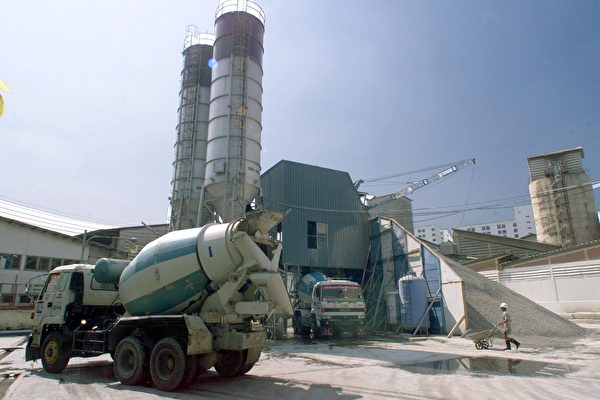The Chinese cement industry is experiencing historic losses as a result of the continuous downturn in the real estate sector and slowing infrastructure investments. The industry has incurred a massive deficit amounting to 11.5 billion yuan, with production levels reaching a new low for the same period since 2011.
According to data from the China Building Materials Association, in the first half of 2024, the total profit of the cement industry was negative 11.5 billion yuan, with over 50% of enterprises facing losses.
A research report from the China Cement Big Data Research Institute indicates that national cement production in the first half of the year was 8.5 billion metric tons, a year-on-year decrease of 10.76%, marking the lowest production level since 2011. Due to deep price declines and decreased demand, the industry has suffered historic losses.
The report reveals that among the 20 cement companies that have disclosed their performance in the first half of the year, 6 are listed on the Hong Kong stock market and 14 on the Shanghai and Shenzhen stock markets.
The overall performance of these 20 listed cement companies is bleak. With regards to revenue, apart from two companies, Huaxin Cement and Ningxia Building Materials, which saw growth, the other 18 companies experienced declines. Seven of them, including Conch Cement, Asia Cement, and Wannianqing, saw a decrease of over 30%.
Five companies experienced declines of over 20%, namely Shanxi Cement, Tianshan Shares, Shangfeng Cement, Dongwu Cement, and Jidong Cement.
Companies with declines ranging from 10% to 20%, include China National Building Material, China Resources Building Materials Technology, Western Cement, and Sichuan Shuangma.
Companies with declines of less than 5% comprise Jinfeng Group and Qingsong Jianhua.
While revenue across the board is decreasing, almost half of the listed cement companies are incurring losses.
Looking at net profits, 11 companies are profitable while 9 are operating at a loss. Profitable companies have also seen declines in their earnings.
The profits of Western Cement, Tapai Group, and Qingsong Jianhua range between 200 million to 400 million yuan, with Qingsong Jianhua experiencing a smaller decline of less than 20%.
Six companies, including Shangfeng Cement and China Resources Building Materials Technology, have profits below 200 million yuan, with over half experiencing significant declines, particularly Wannianqing with a decline of over 99%.
Among the 9 loss-making companies, China National Building Material, Tianshan Shares, and Asia Cement have transitioned from profit to loss. Whereas Jidong Cement, Shanxi Cement, Asian Taie Group, Tibet Tianlu, Fujian Cement, and Dongwu Cement are still incurring losses.
Li Kunming from the China Cement Big Data Research Institute analyzes that in the first half of 2024, due to the continued bottoming out of real estate investments and slowing infrastructure investments, cement demand has continued to decline. Coupled with intense market competition, cement prices have remained low.
The industry as a whole is characterized by “contracting demand, fierce competition, low prices, and operational losses.” Prices have been on a downward trend since the first quarter, and the peak season in the second quarter did not bring the expected demand boost, leading to sustained weakening demand.
Liu Zuoyi, the CEO of Cement Geography, bluntly states that from various data perspectives, the downward trend in the cement industry has become a certainty. Cement production capacity in 2024 may fall below 2 billion metric tons, with 1.9 billion metric tons also a possibility. Even the relatively resilient Yangtze River Delta region may experience a slowdown in 2024.

